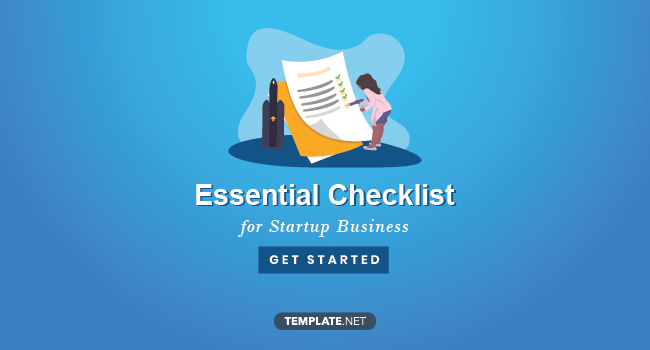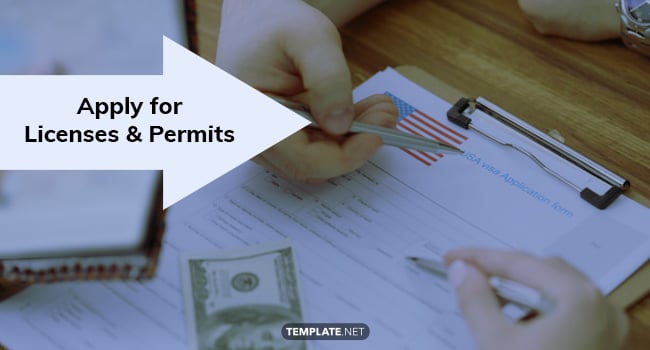An Essential Checklist for Startup Businesses
Starting a business begins with ideas. Thought of something you want to sell? Great! But here comes the not-so-fun part: how are you going to sell that thing? Remember, your ideas aren’t going to execute themselves. Like writing a business plan or business proposal, you need a game plan to build your venture from the ground up. Planning a startup business? Get your small venture up and running through this comprehensive guide.

An Essential Checklist for Startup Businesses
The Use of a Checklist for Startup Businesses
Proper planning and management is a no-brainer for keeping a business going. A part of such a strategy is using a checklist. A checklist is a must-have for businesses. Startup companies in particular know how impactful it can be. Having a checklist around increases efficiency in business operations and reduces errors. It has motivational power too: if an employee sees an empty box on it, you can bet that he or she will be gunning to finish that job. This checklist has everything a startup business needs to get going. Tick these boxes and be on your way to success.
Before Starting a Business
Having a business is all fun and games until you realize you’re totally unprepared. Before you dip your feet into an entrepreneurial venture, make sure you have a clear understanding of business finance. Also, you need to secure important business documents to legally run it. The last thing you need is a notice from authorities telling you to shut your business down due to noncompliance. You don’t want to flush your hard work down the drain, right? These tips should start you off on the right foot. Don’t skips any of these steps and risk your business in the process.
Research Your Business Idea

You may think you already know how to run your business, but a little knowledge won’t hurt you. Research gives you a clearer picture of what to do and how to do it. If you find something that’s off, you can always go back and adjust your plans.
Competitor and Market Research

Competition isn’t necessarily a bad thing; it just means that customers demand what you have to offer. Observe their strategies and compare them to yours. If it helps, you can opt to conduct a SWOT analysis. If the ideas are similar, put a fresh spin on yours to give people something new.
Understand Your Customers

Take a look at your target customers’ demographics. This should help you figure out how to market your business to them. Other variables, such as spending habits, lifestyles, and values, shouldn’t be overlooked. You can also take a look at your competitors’ customer bases and start from there.
Choose Your Business Structure
Pick 1 among these 4 legal structures to adapt to your business.
Sole Proprietorship
Only one person (usually the owner) runs the show. Most find this structure convenient as it’s easy and inexpensive to set up.
Partnership
Two (or more) heads pull the strings here. Partnerships are advantageous because more resources can be pooled. Also, two brains are better than one.
Limited Liability Company
This is a fairly popular one among businesses because owners aren’t liable for any company debts. If you wonder why some corporations are members of LLC ventures, it’s because most states don’t have ownership restrictions for this structure.
Corporation
This last structure is run like an LLC. However, they receive different tax advantages as a benefit. Corporations are best fit for large and established businesses with many employees.
Since the structure tells you which income tax return form to submit, choose one that suits and benefits your business.
Business Funding Options

Building a business without money is obviously a no-no. A lot of small businesses are self-funded, so be prepared to shell out a lot of money for your venture. You can also opt to apply for a small business loan, provided that you have a good business plan that reveals how every cent will be spent.
When Starting a Business
Work doesn’t stop during the pre-startup stage. Once you’re done with the steps above, proceed with caution as you enter this next phase of your business-building process.
Choose a Business Name

Keep it short, simple, and original. It should show what your business does while being catchy enough to be remembered. Make sure to double-check if it’s available in your state to avoid legal problems upon registration.
Website Registration

To check a domain name’s availability, visit a domain registration site. If the name is up for grabs, take it and register it immediately to have it ready for your website launch date.
Get a Logo

This is a key element in branding a business. It shows people what your business identity is. Get a professional to design a creative one for you and file a trademark after it’s finished.
Write a Business Plan

This must cover all the bases for your business. If you haven’t written one yet, now’s the time to do it.
Apply for an EIN (Employer Identification Number)

Your EIN is a requirement for payroll processing and opening your business’s bank account. Secure this number from the IRS and follow their instructions.
Open a Company Bank Account

Choose a bank that meets your business’s needs.
Apply for Licenses and Permits

Secure the following requirements to legally operate your business.
- Business Permits
- State Licenses
- Federal Permits
- Sales Tax Permit
Set Up Business Accounting

Accounting isn’t a sexy process, but it shouldn’t be left out. Choose an accounting system that keeps your books organized to avoid financial disasters.
Obtain Business Insurance

This will depend on the type of business you’re running. However, you shouldn’t miss out on the basics like worker compensation, general liability, and healthcare.
Lease Office Space

If your business is a brick-and-mortar establishment, get this sorted out. Consider factors such as accessibility and foot traffic when picking out a space.
Register Social Media Profiles

Marketing strategies aren’t complete without setting these up. Make your presence known on the World Wide Web by signing up for social networking platforms.






